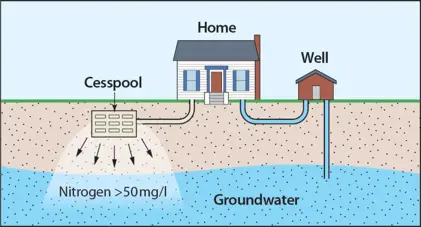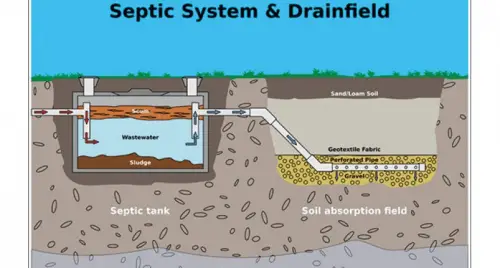A cesspool and a septic tank are traditional waste management methods that are not linked to a centralized public sewage treatment system. Despite their similarity, there are distinct differences between the two.
Summary Table
| Cesspool | Septic Tank |
| Developed in the late 17th century | Developed in the 19th century |
| Made up of a cylindrical waste container | Made up of a waste tank and a drainage field |
| Stores wastes | Stores, treats and recycles wastes |
| Installation cost is cheaper | Installation cost is more expensive |
| Less sustainable | More sustainable |
| Harder and more expensive to maintain | Easier and less expensive to maintain |
| Not legal in many states | Legal in most states |
Definitions

A cesspool is a concrete, cylindrical waste tank that is buried around 3-5 meters under the ground. It is used as a temporary storage of liquid and solid waste materials.

A septic tank, on the other hand, is a container that receives, treats, and processes waste materials – mostly human organic waste – by the use of naturally-occurring bacteria.
Cesspool vs Septic Tank
Cesspools and septic tanks are waste disposal methods commonly used in areas where a public sewage treatment system is not accessible. While both are used as a private waste disposal technique, there is a huge difference between a cesspool and a septic tank.
Origins
The cesspool and the septic tank are among the oldest forms of waste management systems used in different continents, but between the two, the former is an older waste disposal method. The cesspool was developed in the late 17th century, when the population grew at a faster rate, resulting in a higher waste volume. The septic tank, on the other hand, was first invented by John Mouras in the 19th century.
Construction
Compared to the septic tank, the cesspool is much simpler in terms of construction. A cesspool is a cylindrical waste container buried about 3-5 meters underground. It is commonly made with brick or concrete walls, and it is usually one meter in diameter. Physically, it can be compared to a well-liner, except that it is built with holes and it is covered with a hatch. To collect solid and liquid wastes, a sewage inlet is linked into the holes of the cesspool.
A septic tank, by contrast, is more complex in form. While modern versions include only a single tank with a multi-flow septic system, most septic tanks are built with two important parts: a waste tank and a drainage field (also called a soakaway).
The tank, which can store over 1,000 gallons of waste materials, is usually made with fiberglass or concrete. Just like the cesspool, the sewage is drained into the tank by the use of pipes that are connected to the establishment. As solid waste is treated into the tank, liquid waste materials are directed to the drainage field or soakaway, which is a hole filled with coarse stone and rubble. The drainage field allows liquid wastes to percolate into the soil.
Function
Both are used as a traditional waste disposal method, but they are completely different in terms of function. A cesspool is mainly used as a holding container, where solid wastes (sludge) settle deep into the bottom while liquid wastes (scum) percolates back into the soil.
As opposed to the cesspool, the septic tank does not simply store sewage. Rather, it stores, treats, and processes it by the use of naturally-occurring bacteria. The solid waste remains seated into the base of the tank where it forms a sludge, while the liquid wastes are suspended in the middle of the tank before getting pumped into the drainage field – a natural treatment plant that treats, cleanses, and recycles water.
After being treated by natural biological processes, the water then percolates back into the soil.
Installation Cost
Since a septic tank is more complex in both form and function, it has a higher installation cost than a cesspool.
Sustainability
Between the two, installing a septic tank is more sustainable. When proper maintenance is put into practice, septic tanks can remove contaminants that can pose risks to drinking water.
Cesspools, by contrast, do not filter water wastes before letting them percolate into the ground, making it more hazardous to both the environment and to the people surrounding the area.
Maintenance
Cesspools and septic tanks require regular pumping and routine checks, but between them, cesspools are generally harder and more expensive to maintain.
Legal Considerations
A cesspool, when buried deep underground, can come in contact with groundwater, consequently causing health problems. Because a cesspool poses a multitude of environmental and health risks, many states have banned the use of cesspools.
Septic tanks, on the other hand, are permitted by most state and federal laws.





